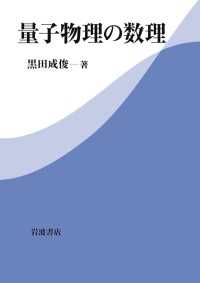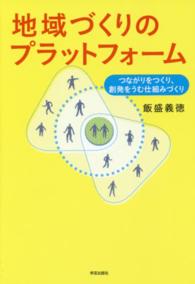Full Description
"Here's a book you'll use over and over again. It's a practical, easy-to-use resource for every teacher who wants his or her students to be better readers and writers. Packed with activities, suggestions, and ideas—it's hard to decide which one to try first!"
Tita Mallory, Director of Curriculum, Instruction, and Assessment
Aberdeen School District, WA
"It's all here! Anderson has included everything from research on effective literacy to specific instructional strategies to use in your classroom tomorrow."
Mike Nelson, Assistant Superintendent
Enumclaw School District, WA
"A hands-on book for teachers to create engaging learning opportunities for students. A comprehensive guide that will become the teacher's best friend."
Linda Holliman, Education Consultant
Littleton, CO
Are You Getting the Results You Want From Your Reading and Writing Instruction?
This outstanding resource book provides research-based, practical ideas for creating a complete balanced reading and writing program that will make a difference for your students. There is a wealth of information including the following:
Descriptions and implementation ideas for each component of a balanced reading and writing program
Checklists for reviewing your own literacy program
Effective strategies for teaching word study, fluency, and comprehension
Vocabulary instructional strategies that expand students' comprehension and word knowledge
Specific pre-reading, during-reading, and after-reading strategies that increase students' comprehension of fiction and nonfiction text
Practical ideas for teaching writing skills in context
Innovative ways of meeting the needs of struggling readers
50 tips any educator can use to positively impact students' reading performance
101 ideas for involving families in your literacy program
Extensive lists of outstanding instructional materials
Suggestions for ensuring that effective school practices are in place to positively impact your students' literacy performance
If you are looking for ideas and tips that can impact your students' reading and writing, this book provides hundreds of classroom-proven suggestions designed for new teachers, experienced teachers, and administrators.
Contents
About the Author
Introduction
1. A Practical Look at Literacy and Effective Schools Practices
Student-Centered Schools
Shared Purpose and Vision
Strong Instructional Leadership
Knowledgeable Staff Members
Alignment of Curriculum, Instruction, and Assessment
Information and Data Collection
Maximizing Available Resources
Abundant and Focused Staff Development
Strong Family and Community Involvement
Embedding Change & Seeking Continuous Improvement
First and Lasting Impressions-A Survey
Checklist
2. Components of an Effective, Complete Reading Program
Read Aloud
Shared Reading
Guided Reading
Literacy Centers
Literature Circles
Independent Reading
Checklist
3. Essential Elements of Reading Instruction
Phonemic Awareness
Phonics
Non-Decodable, High-Frequency Words
Vocabulary Development
Language Structure
Fluency
Comprehension
Checklist
4. Components of an Effective, Complete Writing Program
Modeled Writing
Interactive Writing
Structured Writing
Writers Workshop
Independent Writing
Checklist
5. Teaching Writing Skills in Context
Content
Use of Language
Mechanics
Revision and Editing
Checklist
6. Other Instructional Factors Impacting the Success of
Reading and Writing Programs
Checklist
7. Meeting the Needs of Struggling Readers
Teachers
Classroom Instruction
Effective Reading Instruction
Instructional Time
Appropriate Materials
Program Options
Use of Resources
School-Wide Communication
Family Programs
Community Programs
Policy Decisions
Checklist
8. Information Gathering and Data Collection
9. Staff Training Ideas
10. Fifty 10-Minute Tips for "Leaders" to Use to Impact the
Reading and Writing Performance of Students
11. 101 Parent Tips to Enhance Literacy
Conclusion
References and Suggested Readings








